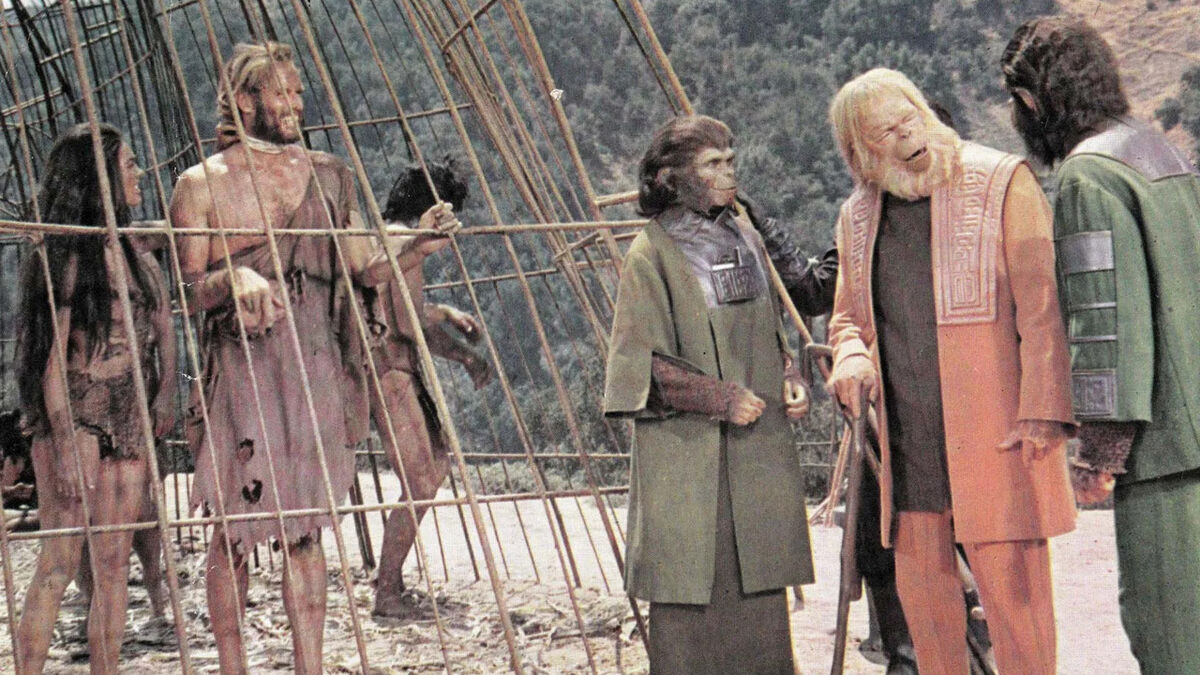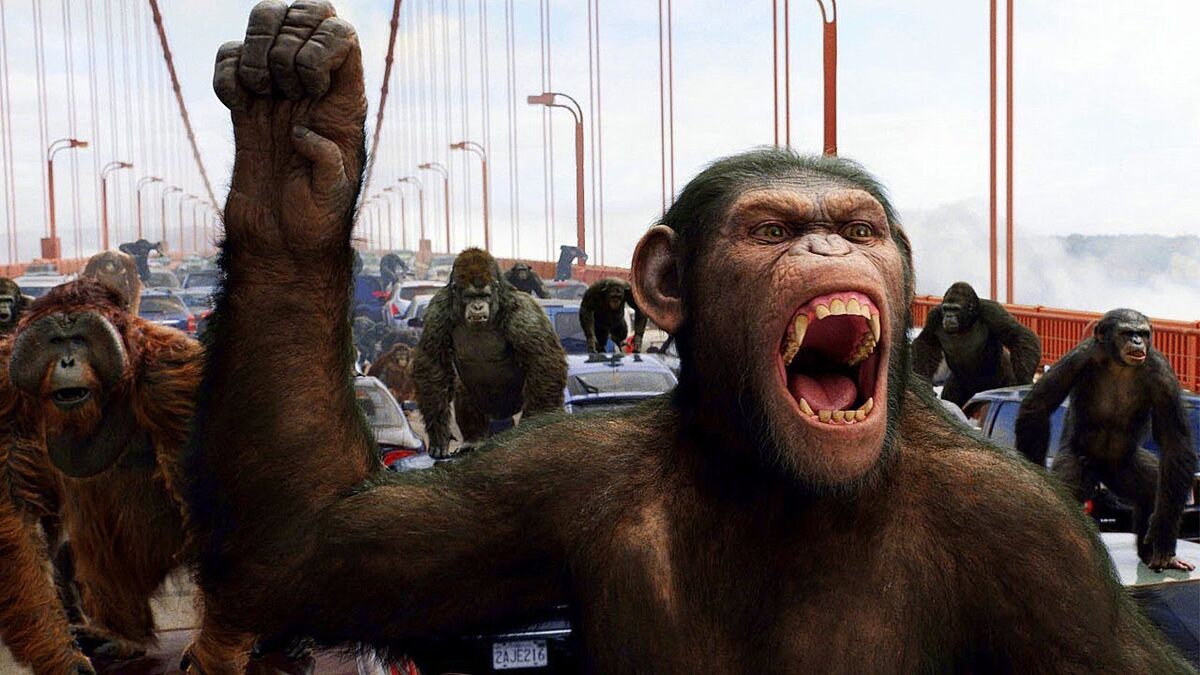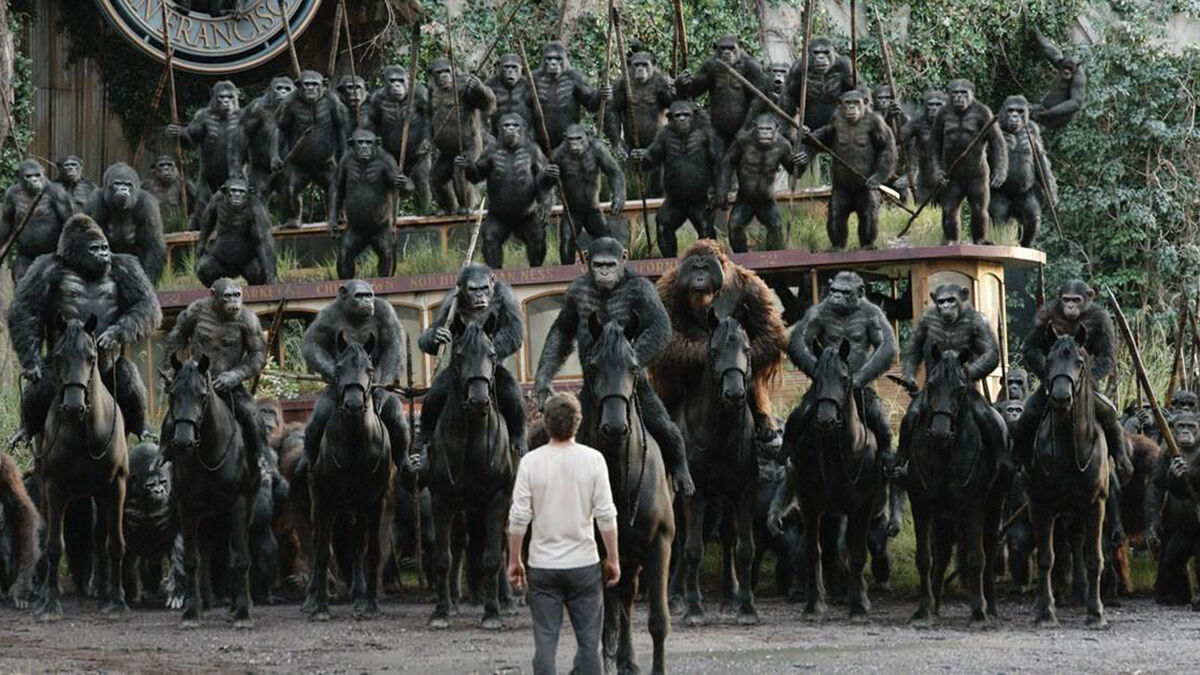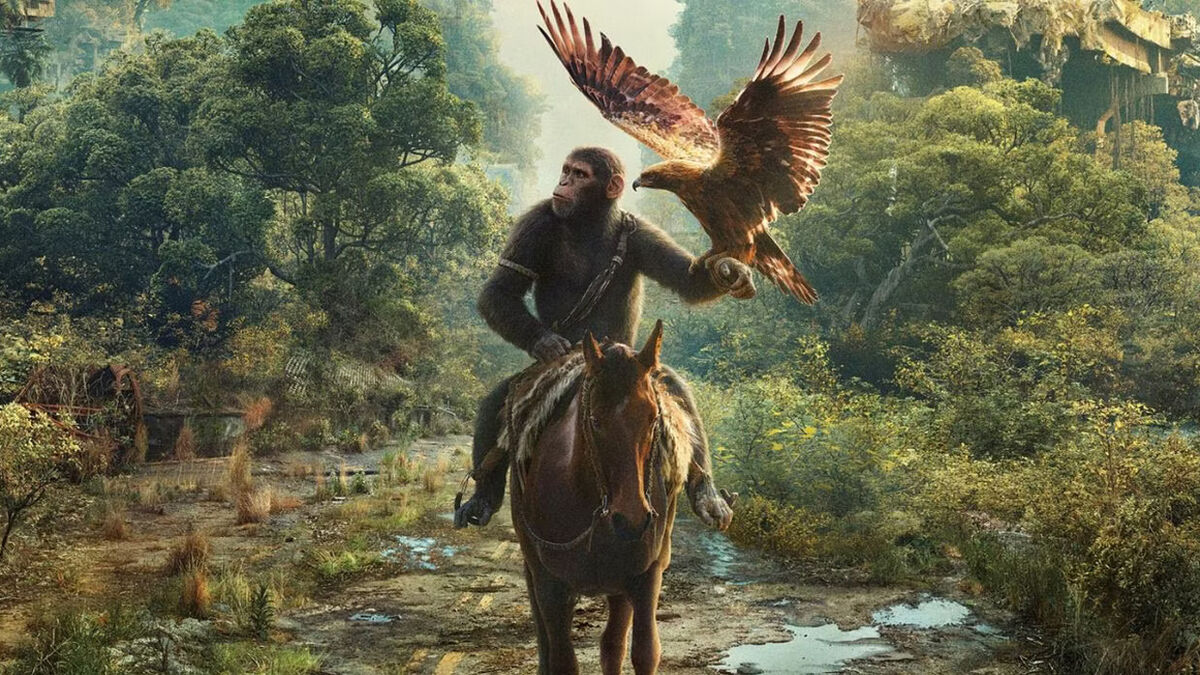It’s an ape’s world; we’re all just living in it. At least, that’s the conceit behind the current Planet Of The Apes films. The newer series certainly pays homage to the original movies, which ran from the end of the ’60s into the ’70s, but has blazed its own trail thanks to initial writers Amanda Silver and Rick Jaffa as well as directors Rupert Wyatt and Matt Reeves, with Wes Ball joining in on the action for this spring’s Kingdom Of The Planet Of The Apes.
Given the fact that the soon-to-be quadrilogy first kicked off just shy of 15 years ago and will jump ahead a few centuries in the new installment, it seems like now is the perfect opportunity to look back at the franchise as a whole, getting into spoilery specifics as we go on this evolutionary journey.

The franchise’s roots reach back to La Planète des Singes, a novel written by French author Pierre Boulle that was published in 1963. Later that year, the book made its way to the States under the title The Planet Of The Apes. While the novel differs in a variety of ways from the eventual movie, the architecture is all there, from the astronauts landing on an ape-ruled world to the societal structures divided up by primate type. There’s also a twist ending, but one that has not yet been translated to the big screen.
Speaking of which, Hollywood came calling and audiences became enthralled with the 1968 adaptation starring Charlton Heston as Taylor, one of three astronauts who found themselves trapped on a world where humans acted as the primitive species while apes dominated. In fact, it took a great deal of convincing and overcoming a throat injury for him to convince sympathetic scientist chimpanzees Dr. Zira and Dr. Cornelius that he could even talk. Of course, Taylor was the one in for the biggest shock of all when he realized that this strange world was actually Earth in his own far future.
How that global change came to be was explored in the sequels Beneath The Planet Of The Apes, Escape From The Planet Of The Apes, Conquest Of The Planet Of The Apes, and Battle For The Planet Of The Apes, plus the Planet Of The Apes TV series, the Return To The Planet Of The Apes cartoon and a variety of Marvel Comics installments. The series features an interesting timeline in that the humans in the first film trekked to the far future and then apes used that same ship to travel back to the present of the ’70s, a move that allowed for the primate takeover in the first place.
Between the fascinating continuity, incredible movie make-up, surprisingly emotional drama, and wild action scenes, these films established themselves as classics with many fans. And of course, being played on cable and local stations in heavy rotation helped build that fandom in the wake of the last film’s 1973 release date.

In 2001 the Tim Burton-directed Planet Of The Apes remake more than tripled its $100,000,000 budget in worldwide box office, but did not lead to a sequel, thanks in part to a much-maligned twist ending of its own. A decade later, Rise Of The Planet Of The Apes debuted, taking a much different approach to the material than previous efforts. This time around, the action began in the present as James Franco’s Will Rodman worked on ALZ-112, a cure for Alzheimer’s disease. In the process, he discovered that the retrovirus lead to advanced intelligence in apes like Caesar, who he raised from a baby and kept at home in secret until an incident necessitated that the chimpanzee move to a primate sanctuary.
After feeling abandoned and mistreated by those around him–both human and primate–Caesar developed a plan to become the leader of the animals, even sneaking out of the shelter to acquire ALZ-112 to make his fellow inmates smarter. However, a new, more virulent version had been developed that proved fatal to humans, spreading through them like a plague. While a pandemic just began to spread, the primates broke out, freed others of their kind from research facilities and zoos, and ran rampant through the streets of San Francisco on their way to claiming the redwood forest beyond the Golden Gate Bridge as their own. By the end credits, we saw this virus start spreading all over the world.
The film paved its own way, but did use some familiar elements from the original film. Many of the ape names–including Caesar, Bright Eyes and Maurice–nod to the characters as well as the actors who portrayed them earlier. You also have retreads of lines like, “Get your stinking paws off me, you damn dirty ape,” an appearance by Heston on TV in the film The Agony And The Ecstasy, and even a subtle runner–mostly seen as quick glimpses of news segments–about a space exploration mission that went missing. Perhaps they’ll come back in the far future to a world that seems totally alien to them.

Rise performed well enough to garner a second film that came out in 2014, Dawn Of The Planet Of The Apes. It began with further news reports about how the pandemic had spread around the world and killed a huge percentage of the human population. With so many casualties, many major cities fell into abject chaos. The story picked up about 10 years after Rise with the apes nicely established in that forest. In fact, they had not even seen a human in two years.
Some humans proved immune to the plague and banded together in San Francisco to re-establish their own community. They trekked into the forest to investigate the viability of the hydroelectric dam that the apes had built their home near. Caesar clearly told them to leave the place alone or war would come: a threat that human leader Dreyfus (Gary Oldman) did not take seriously, as he planned to take the location by force and kill all of the primates who stood in their way. Malcolm (Jason Clarke) attempted a more peaceful approach, which appealed to Caesar. The apes initially allowed the humans to start working on the plant, but their trust was soon shattered.
Both sides had growing factions that wanted to use force to stamp out the other, as well as leaders who knew that war would lead to death and the thinning of already fragile populations. With tensions growing, Koba, a particularly aggressive bonobo who had been horribly mistreated in medical testing facilities, framed humans for the apparent death of Caesar, then led the apes in an attack on the human settlement, which resulted in the kind of bloodshed on both sides one would expect. Though Caesar managed to stop the battle, he understood that his kind had started a war that humanity would not forget.

During the climax of Dawn, Dreyfus managed to get a call out to what he thought was the only surviving human military force. After two years, a dispatched unit finally encountered the primates in 2017’s War For The Planet Of The Apes. These human soldiers–who literally branded themselves Alpha-Omegas–were aided by the apes who had backed Koba’s coup in the previous installment. Even though Caesar showed the human soldiers mercy by sending them back alive, Colonel McCullough (Woody Harrelson) could not leave them alone. He led a siege and personally killed Caesar’s wife Cornelia and eldest son Blue Eyes, though his younger son Cornelius escaped harm.
Knowing they were in danger, Caesar sent the entire ape community on a journey to establish a new home. He intended to exact his revenge on McCullough alone, but was joined by Maurice, Luca and Rocket. Along the way, they picked up a child named Nova, lost a member of his team, and met Bad Ape–a fellow talking primate who had been changed by the virus, indicating that there might be far more of their kind in the world than they initially thought.
Not wanting to lose any more friends, Caesar broke off on his own to confront the Colonel, only to wind up imprisoned along with the rest of their kin: captured, caged and forced to work on building defenses. McCullough explained that the virus that killed most of humanity seemed to have evolved and was now causing man to lose the ability to speak and instilling a desire to return to nature. The Colonel killed anyone who exhibited symptoms, including his own son. However, there was a military force that disagreed with his methods and were on their way to destroy McCullough and his people. Knowing that war was coming, Caesar and the others managed to free most of their fellow apes and escape before the humans began killing each other.
The film ended sometime later with Caesar leading the apes to their new home, far away from the dangers of man. Seeing them arrive safely, Caesar died almost immediately, comforted by his oldest friend Maurice in his final moments.

With Kingdom Of The Planet Of The Apes, the timeline jumps ahead a reported 300 years. Between War and Kingdom, many new tribes moved to the sanctuary, but the current leader Proximus Caesar seems to have corrupted the original Caesar’s ideals by subjugating some of their fellow primates, hunting human beings, and spreading lies about the old world. Luckily for the other members of the society, chimpanzee Noa intends to uncover the truth.
The first trailer hints at a great deal of conflicts at play–ape versus ape, ape versus himself, and ape versus society–but those familiar with the original series will certainly be keeping an eye to the sky to see if a spaceship from the past happens to drop right in the middle of all this chaos. We will all get our answers when the film debuts on May 10.
Related New
Related